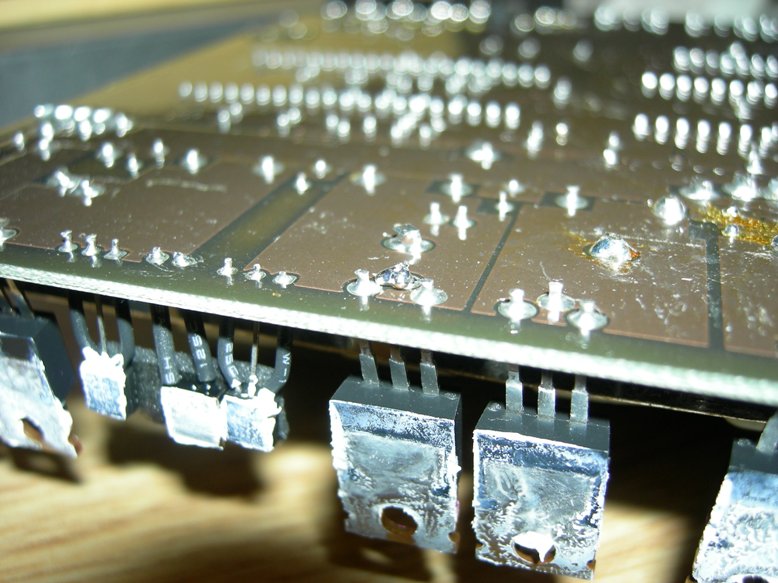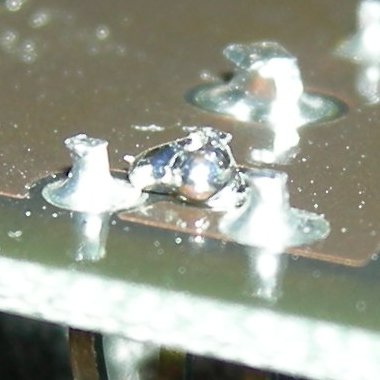I've had the JL Audio 500/5 for 6yrs or so, been fine all along.
I originally installed it.
This week, listening rather loudly, left-front channel got crackly.
The audio signal is still there and identifiable, but is very distorted.
I ruled out the speaker, so I'm back to the JL amp.
I haven't pulled the amp out yet to peek inside. Just wondering what/where to start to look?
Thanks for any help!
I originally installed it.
This week, listening rather loudly, left-front channel got crackly.
The audio signal is still there and identifiable, but is very distorted.
I ruled out the speaker, so I'm back to the JL amp.
I haven't pulled the amp out yet to peek inside. Just wondering what/where to start to look?
Thanks for any help!
Checking back in here- weird thing is that the problem 'healed' itself for a few days. Things went back to normal for several days.
Then last night the same problem came back. I pulled the head unit and swapped RCA cables around. When the FL speaker "distorts" it is at a reduced output. Clipped signal maybe?
Problem is always FL speaker, but for a few minutes last night I could swear I heard the FR speaker start to distort as well. Are the FL and FR amp outputs tied together in any way inside the amp?
Front speaker lines go to a Polk 2way crossover modules, and then to the upper door mounted tweeters and the lower door speakers. Speaker/tweeter check out fine with another source.
I got back to where the amp is mounted, and I see the "Low Ohm" light is illuminated. Shorted speaker wiring? Hopefully in the next day or two I can get to the amp mounts to check wiring and play with all controls, and pull the amp if needed for further inspection.
Then last night the same problem came back. I pulled the head unit and swapped RCA cables around. When the FL speaker "distorts" it is at a reduced output. Clipped signal maybe?
Problem is always FL speaker, but for a few minutes last night I could swear I heard the FR speaker start to distort as well. Are the FL and FR amp outputs tied together in any way inside the amp?
Front speaker lines go to a Polk 2way crossover modules, and then to the upper door mounted tweeters and the lower door speakers. Speaker/tweeter check out fine with another source.
I got back to where the amp is mounted, and I see the "Low Ohm" light is illuminated. Shorted speaker wiring? Hopefully in the next day or two I can get to the amp mounts to check wiring and play with all controls, and pull the amp if needed for further inspection.
Last edited:
Checking back in here- weird thing is that the problem 'healed' itself for a bit, and things went back to normal for several days.
Then last night the same problem came back. I pulled the head unit and swapped RCA cables around. When the FL speaker "distorts" it is at a reduced output. Clipped signal maybe?
Problem is always FL speaker, but for a few minutes last night I could swear I heard the FR speaker start to distort as well. Are the FL and FR amp outputs tied together in any way inside the amp?
Front speaker lines go to a Polk 2way crossover modules, and then to the upper door mounted tweeters and the lower door speakers. Speaker/tweeter check out fine with another source.
I got back to where the amp is mounted, and I see the "Low Ohm" light is illuminated. Shorted speaker wiring? Hopefully in the next day or two I can get to the amp mounts to check wiring and play with all controls, and pull the amp if needed for further inspection.
Last night it was below freezing here in Wisconsin.
Audio system was fine this morning for about 20 min of my morning drive.
Listening at low volumes the whole time, I then heard a mild "pop" sound and the F/L channel went back to the distorted and lowered output.
Temperature related I'm thinking?....
Audio system was fine this morning for about 20 min of my morning drive.
Listening at low volumes the whole time, I then heard a mild "pop" sound and the F/L channel went back to the distorted and lowered output.
Temperature related I'm thinking?....
When it's playing low or distorted, are all 3 of the LEDs lit on all 4 of the driver boards?
I'm assuming you need to get the cover off to see this.
Hopefully tomorrow I can get enough time to remove trim panels so that I can get full access to the amp. I'll report back with your answer.
THANK YOU!!
What's the best way to get all those retaining clips off the heat sink rail without ruining them?
They seem to be rather stubborn just poking around at them....
I pulled the amp from the vehicle and have it on my bench now.
I have a meter, but not a power supply to power it up on the bench.
They seem to be rather stubborn just poking around at them....
I pulled the amp from the vehicle and have it on my bench now.
I have a meter, but not a power supply to power it up on the bench.
I found this interesting.
Although I didn't find any shorted outputs, although I wasn't sure if I would with an intermittent problem, I did notice this on the underside of the board.
This is the solder side of Q102:

And a closeup:

Is Q102 related to the F/L channel? Wondering if when that heats up sometimes there may be some contact of that solder blob with the neighboring solder point?
At the moment is isn't shorted through the blob, but even with a 10x loop I can't see any clearance between there so it has to be under .001"....
And that location is toward the end of the heatsinks that felt hot to the touch when I checked with the distorted condition.
Although I didn't find any shorted outputs, although I wasn't sure if I would with an intermittent problem, I did notice this on the underside of the board.
This is the solder side of Q102:
And a closeup:
Is Q102 related to the F/L channel? Wondering if when that heats up sometimes there may be some contact of that solder blob with the neighboring solder point?
At the moment is isn't shorted through the blob, but even with a 10x loop I can't see any clearance between there so it has to be under .001"....
And that location is toward the end of the heatsinks that felt hot to the touch when I checked with the distorted condition.
Last edited:
It may not be causing the problems that you described but it needs to be removed.
I don't know if this is the LF channel but you should be able to find 0 ohm continuity between one of the speaker terminals and one of the legs of this channel to determine which it is.
Do NOT power up the amp without the transistors tightly clamped to the heatsink.
When you power it up after you reassemble it, I'd suggest that you have nothing larger than a 15 amp fuse in series with the B+ wire.
I don't know if this is the LF channel but you should be able to find 0 ohm continuity between one of the speaker terminals and one of the legs of this channel to determine which it is.
Do NOT power up the amp without the transistors tightly clamped to the heatsink.
When you power it up after you reassemble it, I'd suggest that you have nothing larger than a 15 amp fuse in series with the B+ wire.
- Status
- This old topic is closed. If you want to reopen this topic, contact a moderator using the "Report Post" button.
- Home
- General Interest
- Car Audio
- JL Audio 500/5 help please!